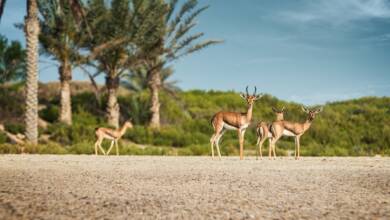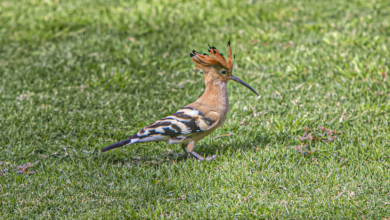UAE Fauna: The Gazelles
There are three main species of gazelle distributed throughout the Arabian peninsula. As they are closely related, small and very shy, the naturalist who sees them leap gracefully off in the distance is often unable to determine which of the three he has seen: the Arabian, the Sand or the Dorcas gazelle.
These animals are spread over a vast land mass stretching from the Mediterranean to the Indian Ocean, and from the Red Sea to the Arabian Gulf.
It is not surprising that in more remore areas some gazelle should have developed into subspecies such as the Mountain gazelle and the Muscat gazelle.
Long gone are the days when explorers such as Wilfred Thesiger took not only guides and camel drivers but also good hunters on his expeditions, to provide his caravan with gazelle or even oryx meat. It would be inconceivable today to travel into the desert, relying solely on hunted gazelle for sustenance.
In fact most people who now spend a Friday in the desert or mountains would never give the possibility of spotting a gazelle a thought, and would certainly take their own picnic. However, a few gazelle have managed to survive in the wild until the present day, despite rapid development which is laying bands of concrete and tarmac everywhere across the land.
Arabian or Idhmi gazelle (Gazella gazelle Arabica)
Of the three main species mentioned above, only the Arabian gazelle seems to have survived in several places.The Arabian gazelle is the smallest species weighing a mere 12 Kg. Although their numbers are not great, it is still found in the desert between the coast and the mountains south of Dubai’s Jebel Ali area.
If disturbed, the Arabian gazelle may be seen to spring up from behind a bush or sand dune, and make its gateway in graceful leaps which will develop into a flat-out gallop if pursued. It would be unusual to sight the animal at distances of less than 200-300 metres, at which point the noise of an approaching vehicle will prompt it to take cover. Those observed over a period of about a year appeared to be extremely territorial.
They lived in herds of up to seven normally consisting of one male and several females with their young or sub-adults. The territory is marked with strategically deposited faeces, and with a scent excreted from glands located just beneath the eyes. The glands produce a strong smelling, black, wax-like substance, which is smeared on bushes, branches and even stones by a rubbing motion of the head.
These gazelle are most active in the early hours of the morning. A shady resting place will be found to give shelter from midday heat; should the territory contain any wind-eroded sandstone formations, the gazelle will undoubtedly be found enjoying the shade of the overhanging stone.



